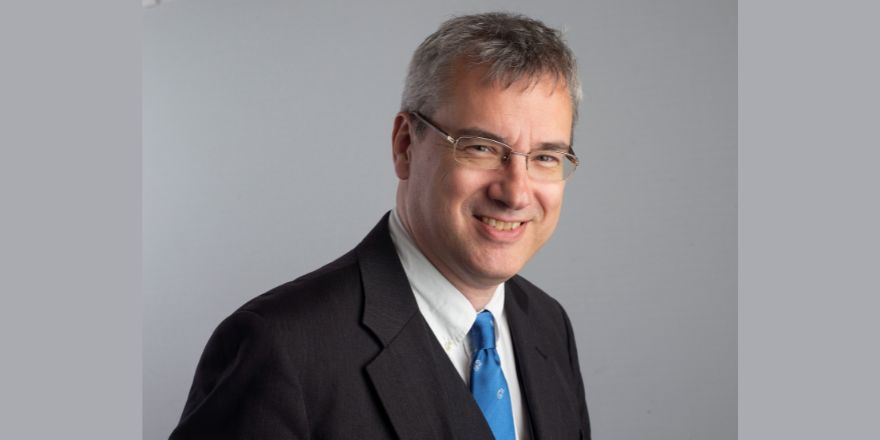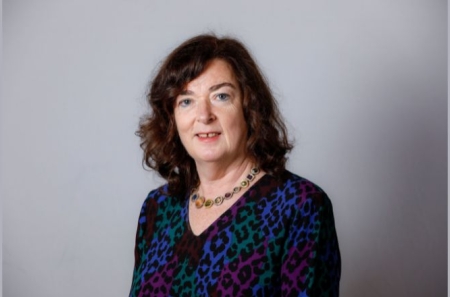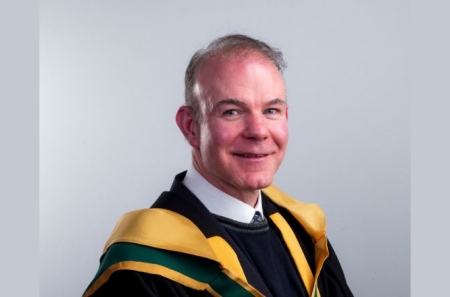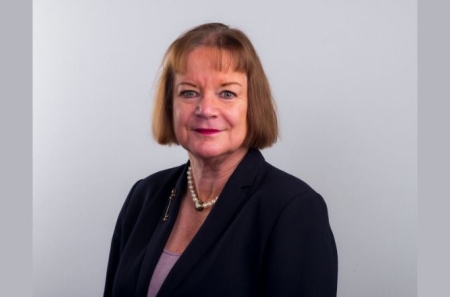
David Stifter MRIA, Professor of Old and Middle Irish
01 September 2023Professor Stifter’s research is part of the effort to bring light into dark periods of human history through the study of historical and prehistoric stages of languages.
David Stifter MRIA, Professor of Old Irish, Department of Early Irish, Maynooth University
Languages are keys to unlock human history. Not only do the texts written in ancient and medieval languages talk to us directly about the lives and thoughts of their speakers in the past, the lexicon and the abstract structure of those languages also encapsulate evidence of their history and evolution, like footprints in the sand or shadows on the wall. They provide information, however indirect, about the material and the intellectual culture of the people who spoke them, information that cannot be extracted from material remnants of the past. Reading and interpreting those footprints or shadows requires caution and professional intuition. My work is one cog in that sublime endeavour to bring light into dark periods of human history through the study of historical and prehistoric stages of languages.
My research interest lies in the grammar and the lexicography of the historical and prehistoric stages of Irish. I am mainly concerned with documenting and describing the early medieval Irish language between c. 600 and 1200 a.d. (called Old and Middle Irish), and its immediate predecessor, Primitive Irish (c. 400–600 a.d.). I also study the extinct ancient sister languages of Irish on the European Continent—Lepontic, Celtiberian and Gaulish—which shine invaluable indirect light on Irish and its medieval sisters Old and Middle Welsh, Breton and Cornish, and I am interested in the historical stages of other languages across the world, such as Ancient Japanese.
Over the past decade, I have been focusing on the evolution of Old Irish across time, chiefly in the European Research Council-funded research project Chronologicon Hibernicum (2015–21). It was the aim of ChronHib to develop computational tools to facilitate assessing the amount of variation in a linguistic corpus. Our international project team created a corpus of deeply annotated Old Irish texts, Corpus PalaeoHibernicum (CorPH). Our chief methodological innovation is a formalised method of annotating linguistic variation in the corpus. Traditional annotation includes part-of-speech tagging and morphosyntactic analysis. We developed Variational Tagging, which adds the dimension of time to the corpus. Another statistical method that we developed, Bayesian Language Variation Analysis (BLaVA), uses this variational information and allows us to create a probabilistic representation of linguistic change over time. Since it operates with Bayesian inference, it is a way of visualising the probability of change, especially in under-documented languages with small corpora.
Early Irish has one of the richest surviving medieval literary traditions in Europe and in the world. As a result, Old Irish and Middle Irish are abundantly attested in manuscript sources; the evidence for Primitive Irish, however, is meagre and consists almost exclusively of inscriptions on stone monuments in the uniquely ingenious ogam alphabet. Together with colleagues in Maynooth and at the University of Glasgow, we are currently studying these inscriptions. In the OG(H)AM project (2021–24), we will 3D-record and digitise all c. 600 examples of this fascinating, three-dimensional writing system. At the end of the project, all documentation and analysis will be available on our database and project website.
But we can go back even further in time in the evolution of Irish than the early first millennium a.d. Earlier, prehistoric stages are Proto-Celtic (reconstructable for the late second millennium b.c.) and Proto-Indo-European in the fourth millennium b.c. The historical circumstances of these ancestral stages in the Iron Age and Bronze Age, and the intervening stretch of several thousands of years, are veiled in obscurity, except for the information that we can extract from the language itself. When studying these deepest and oldest roots of Irish, however, we cannot rely on materially attested records, that is, writing; instead, we have to operate with language comparison and reconstruction. Much remains to be done in the microscopic analysis of linguistic data that may hold the key to insights that cannot be gained anywhere else. Over those 6,000 years of history that we can survey directly or indirectly, Irish has acquired many layers of loanwords. Among them are thin traces of words that were borrowed from ancient languages in Europe that have otherwise disappeared without trace.
Evidence like this may help to elucidate aspects of prehistory. We are still only at the beginning of understanding how a Celtic language came to be spoken all over Ireland. Can we say anything about languages that were spoken in Ireland before the spread of Goidelic? In collaboration with palaeogeneticists and archaeologists, I hope that it will be possible to make progress in answering this and other questions in the future.



